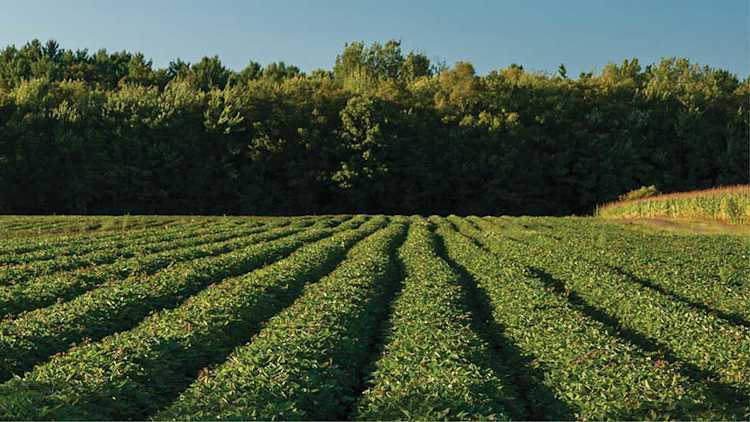When is land overvalued? Here’s how economists figure it out

Next week, we’ll find out if a longstanding trend of strong growth in Canadian land values continues in the FCC 2018 Farmland Value Report. But this week, I’m going to show you how I understand the source of that strength.
I suggest tracking the changes in farmland values relative to changes in revenues. There are many ways to do this, but the easiest is what I would label a farmland “Price-to-Earnings” (PE) ratio. It measures the price of farmland as a multiple of crop receipts. Economists use it to understand the relative value of farmland over time.
Healthy crop receipts trigger higher farmland prices
Farmland values gain the most when:
Interest rates are generally low, and
Crop receipts are high or are expected to get higher. Buyers will pay more for land they estimate will generate a higher return.
When land values increase more quickly than revenues, the ratio climbs. There’s tolerance for some increase, but a ratio that moves too much from its historical average could indicate a future market adjustment may be needed to bring it back in line with that average.
The Price-to-Earnings (PE) ratio
Price-to-Earnings ratio = Average farmland price (per acre) / Average expected receipts (per acre)
where average expected receipts = Average of (expected prices X expected yields per acre for each crop in a ‘standard’ crop rotation)
How does it work?
To find the provincial farmland price, use Statistics Canada’s average per acre price of farmland and buildings.
To determine a province’s average expected receipts:
Estimate its “standard” crop rotation (e.g., assume a corn/soybeans rotation for Ontario or a canola/wheat/peas rotation for Saskatchewan).
Calculate the average crop price and average yield expected for a year, by taking each commodity’s most recent three-year average received price and yields (weighted by recency).
Is Canada’s farmland PE ratio now higher than the long-term average?
At the start of 2018, the ratio was generally higher than its historical average. It had slowly climbed above the average over the last 5 years when growth in land values exceeded the growth in receipts. I’ll provide a breakdown of 2018’s land values next week, and the following week, I’ll see if those new values and last year’s flat farm revenues will have moved the ratio.
What else shapes farmland values?
The PE ratio uses expected values for commodity prices and yields (based on historical trends) and it isn’t perfect. For one thing, PE ratios can’t be used in comparative assessments of provincial averages. Each ag sector earns revenues according to different cycles and each province has a different mix of sectors. Influences external to agriculture (such as urban development) are also diverse across provinces.
Aside from that, factors other than crop revenues also influence the supply and demand of land, and therefore its price. These include:
Interest rates. Despite five rate increases in the last 21 months, borrowing costs remain historically low – a boost to the demand for farmland.
A robust outlook for Canadian ag over the last decade. Buyers assign higher values to land they anticipate will generate greater future revenues.
Farmland available for sale is limited. Short supply always boosts prices.
This ratio is powerful because it links land values and revenues, their most important driver. We’ll see next week what happened to farmland values in 2018.
Jean-Philippe (J.P.) Gervais
Executive Vice President, Strategy and Impact and Chief Economist
J.P. Gervais is Executive Vice President, Strategy and Impact and Chief Economist at FCC. His insights help guide FCC strategy, monitor risks and identify opportunities in the economic environment. In addition to acting as an FCC spokesperson on economic matters, J.P. provides commentary on the agriculture and food industry through videos and the FCC Economics blog.
Prior to joining FCC in 2010, J.P. was a professor of agricultural economics at North Carolina State University and Laval University. J.P. is a Fellow of the Canadian Agricultural Economics Society. He obtained his PhD in economics from Iowa State University in 1999.
